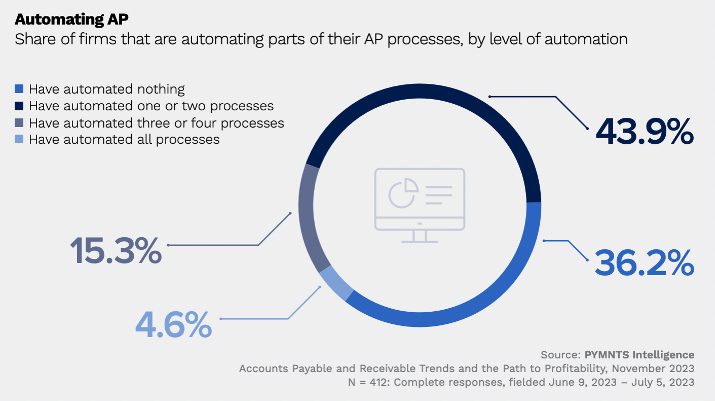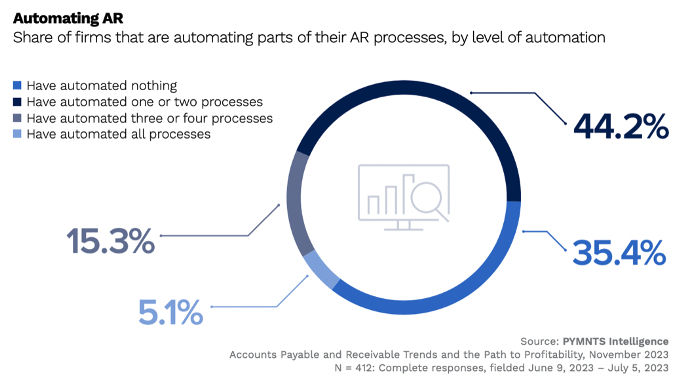Over One-Third of Mid-Sized US Firms Miss out on AP and AR Automation Benefits

The number of payments and invoices that businesses must process can increase, especially for growing businesses.
Firms are recognizing the need to automate accounts payable and receivable processes to ensure streamlined operations in their daily routines. With the proper automation in place, companies may reduce processing time delays and gain operational efficiencies, ending up with cost savings that can be allocated to foster further business growth.
In addition, labor can be reallocated from manual tasks to other purposes that are higher priority for the core business. However, despite these benefits, few mid-sized U.S. companies have fully automated, according to the study “Accounts Payable and Receivable Trends and the Path to Profitability,” a PYMNTS Intelligence and American Express collaboration.

The study found that more than one-third of mid-sized U.S. companies — those that generate between $3.5 million and $15 million in annual revenue — have not introduced any automation within their AP or AR processes. Meanwhile, only 44% automated partially, which the researchers defined as automating just one or two tasks. Most companies that have postponed automation cited concerns about the cost and complexity of implementation.

Beyond cost, sometimes corporate mindsets can serve as an obstacle to embracing automation. Kat Battle, product manager for Complete AP at Bank of America, told PYMNTS in an interview posted Wednesday (Nov. 29) that many companies (or their decision makers) are reluctant to change how they do things.
“There are many AP departments doing most tasks manually and working on paper,” said Battle. “More than is commonly admitted.”
The challenge, she said, is “how to turn those AP/AR departments from a cost center to a value generator.”
To her, the solution is clear: automation.
Other than cost savings, automation can generate value in several key areas of a mid-sized firm. Battle mentioned that one benefit derived from automation that is particularly remarkable is “to improve the way businesses are engaging with their suppliers by streamlining the payment process and providing more data transparency.”
The study revealed that mid-size firms anticipate a 50% increase in payments made and a 46% increase in invoices delivered over the next three years, so the time to automate may be now. The surge in payment and invoice volumes will likely pose severe challenges for businesses that stubbornly process accounts manually, meaning that those following the wave of automation may generate a competitive advantage.
About the Numbers
“Accounts Payable and Receivable Trends and the Path to Profitability” explores the investments made by firms in automating and streamlining their AP and AR processes. It also sheds light on the reasons why some businesses have held off on automation.
For all PYMNTS B2B coverage, subscribe to the daily B2B Newsletter.

